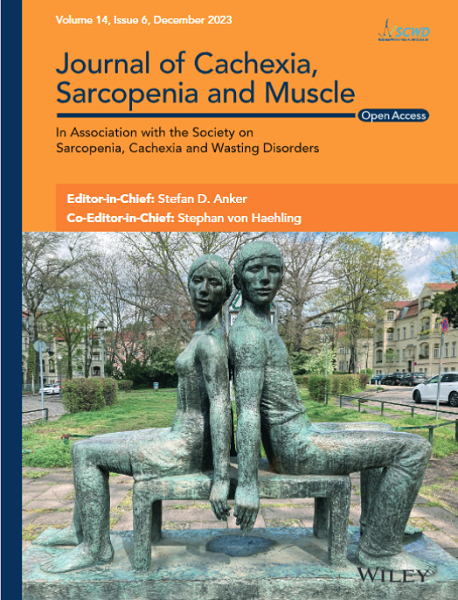Body Composition Assessment Provides Prognostic Information in Patients With Cancer Affected by Chronic Graft vs. Host Disease
Abstract
Background
Additional tools are needed to assess mortality risk among patients with cancer. Patients with chronic graft vs. host disease (cGVHD) after allogeneic haematopoietic cell transplantation (HCT) represent a high-risk cancer population with mortality risk explained by cGVHD severity, but also informed by baseline comorbidities, functional status before and after HCT, and cumulative toxicity from the procedure and its complications. Radiographic body composition metrics from CT scans have previously shown association with complications in other populations.
Methods
We examined a single-centre consecutive series (2005–2016) of HCT recipients with cGVHD and CT-scans immediately proximal to cGVHD diagnosis to investigate association of radiographic body composition measures and mortality. Skeletal muscle index (SMI) and fat index (FI) were quantified on CT imaging at the 3rd lumbar (L3) and 4th thoracic (T4) vertebra. SM Hounsfield units (HU) were obtained to evaluate SM density. Cut points for SMI were from literature and cut points for FI were established by sex-specific optimal stratification.
Results
A total of n = 113 patients met the inclusion criteria for this analysis, aged 51.2 ± 10.5(SD) years and predominantly male (n = 71, 63%) and diagnosed with NHL (n = 110, 97%). Onset cGVHD NIH overall severity was mild in N = 56 (49%), moderate in 44 (38%) and severe in 15 (13%), with median time to cGVHD onset after HCT of 173 days [IQR 122;295]. A CT scan at 77 days [IQR 33;202] post HCT was selected for analysis. In multivariate analysis, CT-defined body fat ≥ 35% was independently associated with increased mortality (HR 2.094 (95% CI 1.060, 4.136), p = 0.033) overall. Patients of male sex had higher FI than females and showed a more prominent association between high FI and mortality. SMI as well as other indices of adiposity were not associated with survival in multivariable analysis including BMI, sarcopenic obesity and low skeletal muscle radiodensity. In exploratory analyses, we demonstrated similar results per CT chest at T4, suggesting possible future application to a larger HCT population.
Conclusions
These data support that radiographic body composition measures provide prognostic information among patients with cancer affected by cGVHD post-HCT and suggest that high body fat % is a promising candidate for future study. These findings suggest that low skeletal muscle mass alone does not predict for poor outcomes in HCT patients with cGVHD as previously described in other cancers. Independent validation of this work is needed, including further studies based on CT chest to enhance application to a larger HCT population.


 求助内容:
求助内容: 应助结果提醒方式:
应助结果提醒方式:


